CEDRIG Light
Rapport PDFHorti-Sempre Phase 2, Nacala Corridor in Northern Mozambique
Vue d'ensemble
Informations Générales
Auteur
Michael Fink
Dernière mise à jour
juin 2018
Objectif général
The overall objective of Horti-Sempre is to increase the annual net income of 25,000 smallholders by 30% against baseline by supporting the growth of the horticultural sector in Northern Mozambique in view of its proven importance as income creator.
Pays
- Mozambique
Budget
6'500'000 CHF
Durée de l’activité
01/2017 - 12/2020 (48 months)
Sommaire
Description
The overall objective of the Horti-Sempre Phase 2 Project is to increase smallholder’s annual net income by 30% against baseline by supporting the growth of the horticultural sector in Northern Mozambique in view of its proven importance as income creator. To fulfil its mission and reach the overall objective, Swisscontact proposes for Horti-sempre Phase 2 a logic of intervention based on three main Outcomes that unfold around three main project components namely (1) inputs and practices, (2) irrigation and (3) sector competitiveness. OUTCOME No 1: Productivity of horticultural smallholders in the Nacala Corridor in Northern Mozambique increased OUTCOME No 2: Horticultural smallholders in the Nacala Corridor in Northern Mozambique increased their area under irrigation OUTCOME No 3: Market responsiveness and competitiveness of the horti-cultural sector in Northern Mozambique is increased The three components will be complemented with two transversal topics: Women’s Economic Empowerment (WEE) throughout the different interventions and through special women targeted interventions and Access to existing funding options. Based on experience from Phase 1, Swisscontact beliefs that Horti-Sempre Phase 2 has the potential to reach 10'000 semi-commercial and 15'000 subsistence male and female smallholders in Northern Mozambique increasing their income by up to 30%.
Secteurs d’intervention
- Agriculture
- Sécurité alimentaire
- Développement rural
- Gestion de l’eau
Documents
Images
Logos
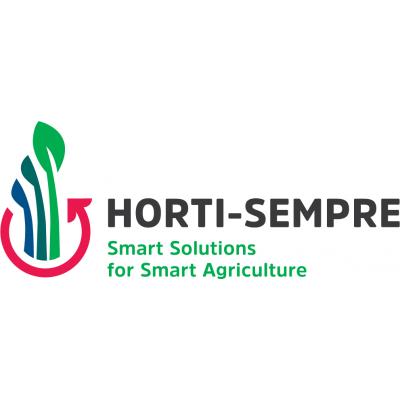


Perspective des risques
Aléas dûs à la dégradation de l’environnement
Nom de l'aléa
Dégradation (terres, sols, écosystèmes, biodiversité)
Exposition
Oui
Conséquence
Key consequences are lower yields due to degraded soil and higher need of farmers to use inputs (fertilizers)
Probabilité
Probable
Gravité
Nuisible
Importance du risque
Risque moyen
Nom de l'aléa
Pollution de l’eau (en surface et souterraine)
Exposition
Oui
Commentaires
Water pollution mainly in peri-urban areas due to urban water and soil contamination (e.g. from factories, waste, etc.).
Conséquence
Key consequences are the loss in product quality, as well as potential health risks for consumers. Assessment of hazard is difficult because of limited data availability on water and soil quality.
Probabilité
Probable
Gravité
Peu nuisible
Importance du risque
Risque faible
Nom de l'aléa
Nuisibles et épidémies
Exposition
Oui
Commentaires
Pests and epidemics occur because of poor crop rotation and lack of knowledge or availability of properly formulated defensives (pesticides, insecticides, fungicides). Pests and epidemics are ocurring more frequently during the hot and rainy season compared to the cold and dry season.
Conséquence
Key consequences are crop losses (sometimes failure) and that farmers avoid production in warmer and wetter months of the year
Probabilité
Probable
Gravité
Nuisible
Importance du risque
Risque moyen
Aléas naturels (hydro-météorologiques et géologiques)
Nom de l'aléa
Vagues de chaleur
Exposition
Oui
Commentaires
According to the World Bank, the number of hot days per year increased by 25 in the last 40 years, and much of this has occurred during the southern hemisphere autumn. This corresponds to the first harvest cycle of many major grains across the country, with significant implications for agricultural pests and yields.
Conséquence
Key consequences include a shortening of the growing season, crop failure (no yield) or crop losses (lower yields)
Probabilité
Très probable
Gravité
Nuisible
Importance du risque
Risque élevé
Nom de l'aléa
Sécheresses
Exposition
Pas sûr
Commentaires
Since the 1960s, mean rainfall has decreased by an average of 2.5 millimeters per month (3.1%) per decade. Increased rainfall over the northern regions, highly variable conditions in the central regions, and persistent drought periods coupled with episodic floods in the south. In Northern Mozambique, seasonal droughts are occurring, meaning that rains are delayed.
Conséquence
Delayed rains result in loss of seeds of rainfed crops (e.g. maize) and the need to rebuy and re-sow crops
Probabilité
Probable
Gravité
Nuisible
Importance du risque
Risque moyen
Nom de l'aléa
Tempêtes, tornades et/ou ouragans, vents forts, tempêtes de sable
Exposition
Oui
Commentaires
Frequency of storms has increased, but events are seasonally concentrated and farmers normally wait with sowing until the risk has decreased.
Conséquence
Destruction of basic infrastructure and crops in early stage of growth
Probabilité
Peu probable
Gravité
Nuisible
Importance du risque
Risque faible
Nom de l'aléa
Inondations
Exposition
Oui
Commentaires
The proportion of days with heavy rainfall events has increased by 2.6% per decade according to the World Bank. The number of days with heavy rainfall currently amounts to ~25 per year. However, events are seasonally concentrated and farmers normally wait with sowing until this risk is lower.
Conséquence
Destruction of basic infrastructure and crops in early stage of growth, destruction of trade infrastructure (e.g. bridges and roads)
Probabilité
Probable
Gravité
Nuisible
Importance du risque
Risque moyen
Nom de l'aléa
Erratic Rains
Exposition
Oui
Commentaires
Recently, rainfalls in Northern Mozambique are out of usual patterns which farmers rely on. Tendency towards delayed rainfalls.
Conséquence
It is difficult for farmers to predict the start of the rainy season. Due to a delayed start of the rainy season, the growing cycle is postponed into the hot season when it is difficult to produce horticulture. Higher risk of pests due to humidity.
Probabilité
Très probable
Gravité
Nuisible
Importance du risque
Risque élevé
Aléas dûs aux changements climatiques (et à la variabilité du climat)
Nom de l'aléa
Tendances générales à l’augmentation ou à la diminution des températures moyennes
Exposition
Non
Commentaires
Temperatures have generally increased by 0.6° C over the last fourty years, with particularly pronounced increases observed during the hot season (September - March). This increase has so far not considerably affected horticulture as the vegetables are produced during the drier and cooler winter months (April - August).
Nom de l'aléa
Changements dans la fréquence et l’intensité des phénomènes météorologiques extrêmes (ex : vagues de froid ou de chaleur, inondations, sécheresses, tempêtes, ouragans, cyclones)
Exposition
Non
Commentaires
Frequency of floods is increasing in the country, but mostly in the South and Centre where Mozambique does not control the dam system on the main river (e.g. Limpopo, Save, etc.). Other events (hurricans, cyclones, etc.) are also concentrated in the South/Centre.
Nom de l'aléa
Modifications des saisons
Exposition
Oui
Commentaires
A shift of seasons is observed in Northern Mozambique. Average annual rainfall has remained similiar (or even slightly increased). However, the precipitation patterns have changed. More erratic and locally concentrated rainfall is observed which often results in floods and a shorter growing season.
Conséquence
Shorter growing season, longer idle season (hunger period - epoca de fome), unpredictability of sowing time, loss of first seeds (investment), extension of growing season into warmer months, loss of 1 or more production cycles
Probabilité
Très probable
Gravité
Nuisible
Importance du risque
Risque élevé
Évaluation détaillée des risques nécessaire ?
Perspective des impacts
Estimer l’impact sur l’environnement
Milieu environnemental
Écosystèmes
Élément de l’activité
Underground Dams
Impact sur l’environnement
Small-scale rainwater retention increasing soil humidity potentially changing the ecosystem; limited additional pollution due to the plastic used to build the dam
Milieu environnemental
Sol
Élément de l’activité
Inputs (Fertilizer & Pesticides)
Impact sur l’environnement
Use of fertilizer and pesticides by horticulture smallholders is common. However, the used amounts are very limited due to a lack of financial resources. Thus, a small negative impact on the soils can be expected. The Project only gives technical advice following a market-approach and does not directly promote and increased use of fertilizers and pesticides for the horticultural production.
Estimer l’impact sur les changements climatiques
Élément de l’activité
Increasing volumes and de-seasonalization of horticulture production
Impacts sur les changements climatiques
Possibly decreasing emissions of Greenhouse Gases (GHG) due to local horticultural production and shorter transport routes. The international and inter-regional imports might decrease due to a higher availability of locally produced vegetables.

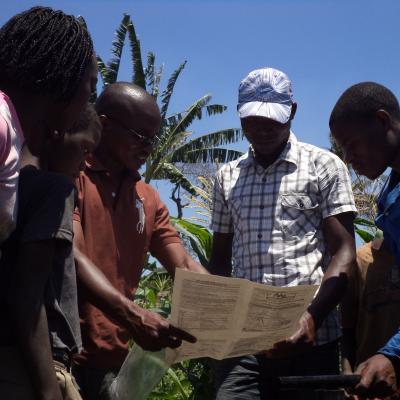
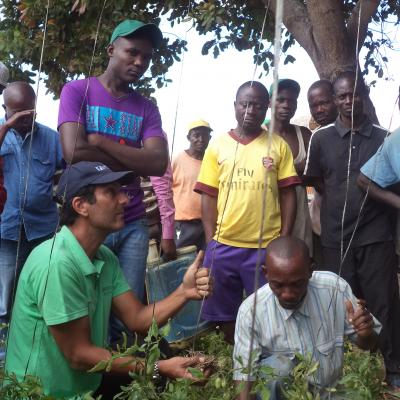
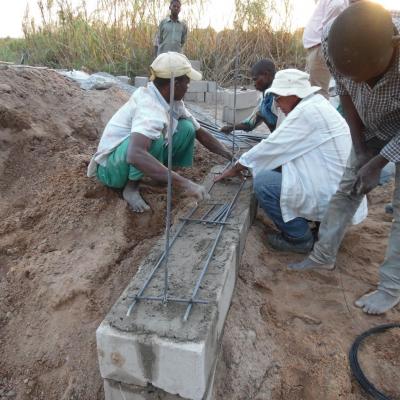
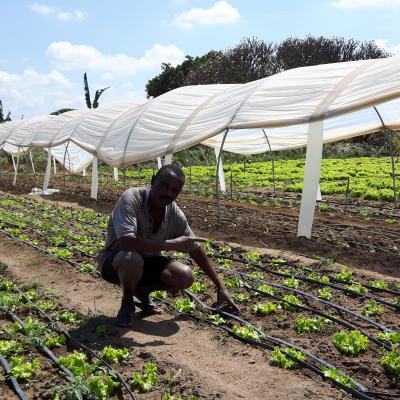
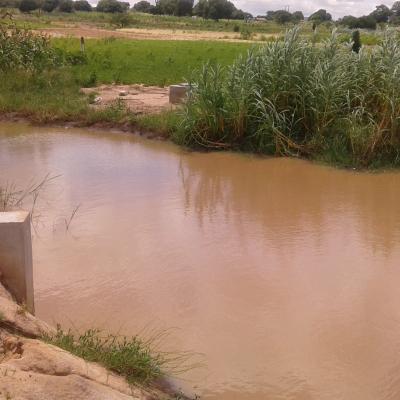
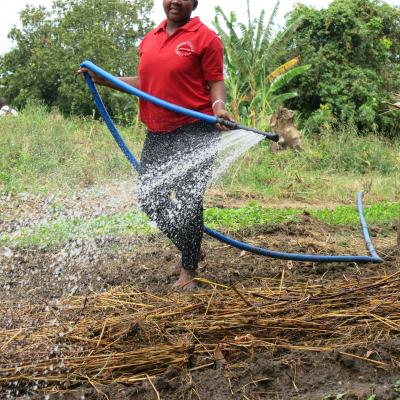
Commentaires
Soil degradation is frequently the result of poor conservation practices (no soil coverage, deep tillage, poor biodiversity) aggravated by heavy rains. Consequently, more inputs are needed resulting in a vicious circle of degradation.